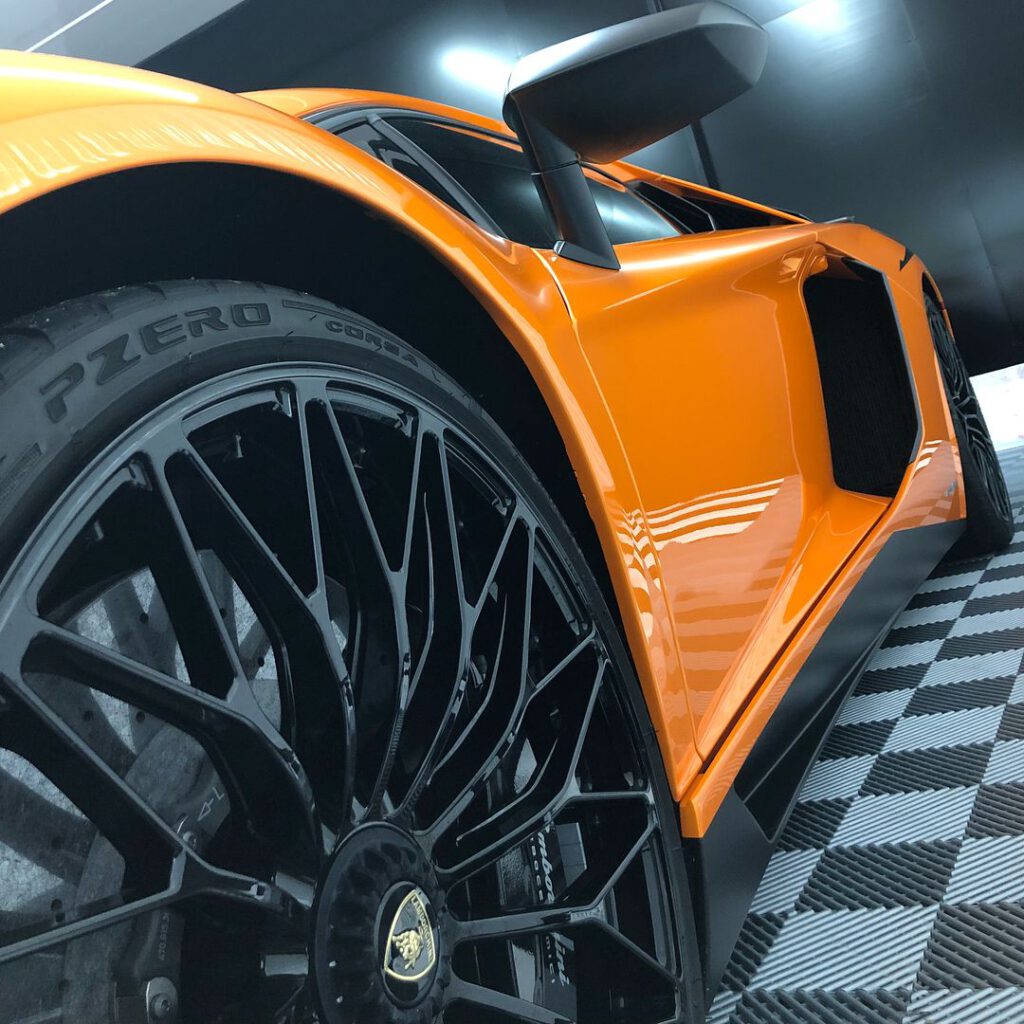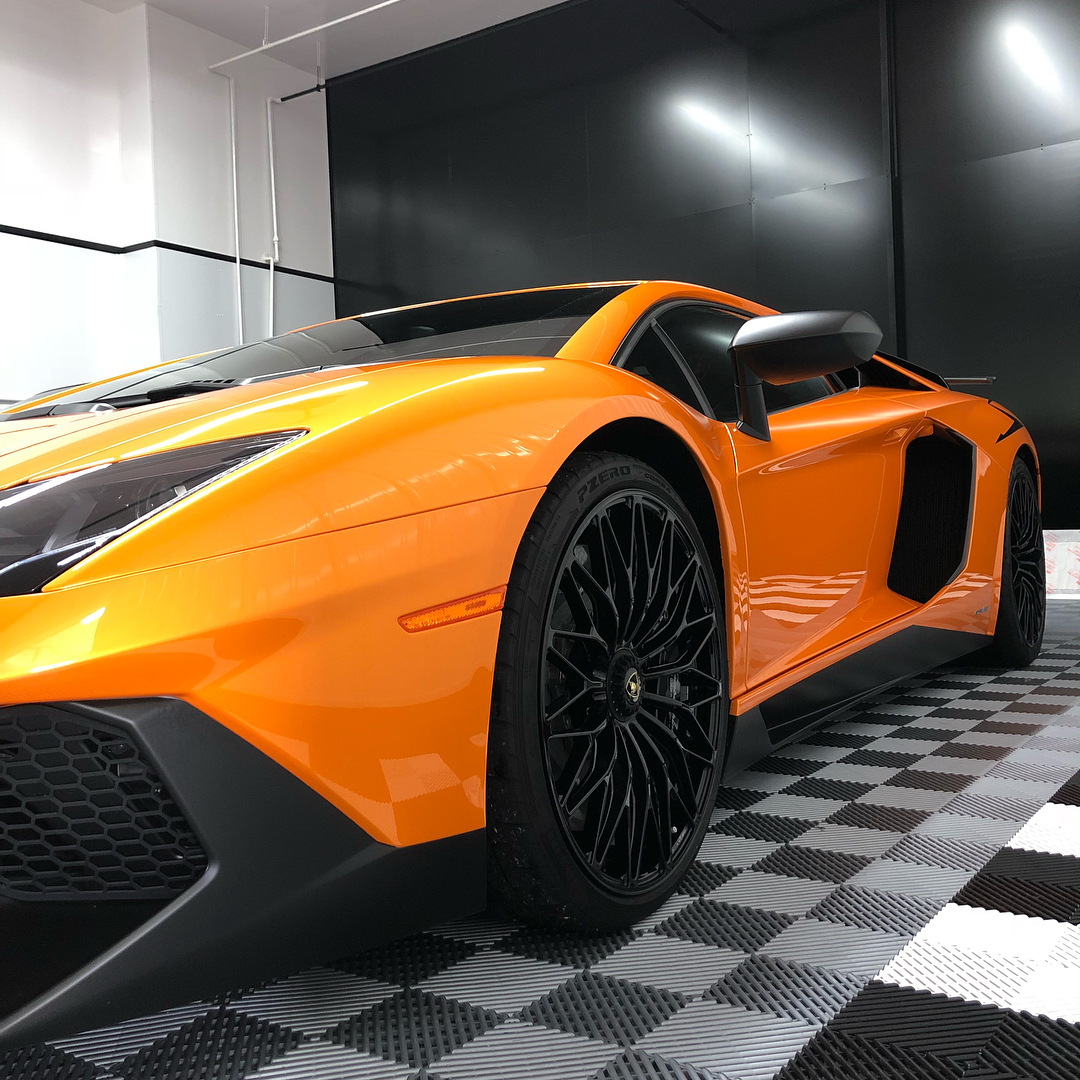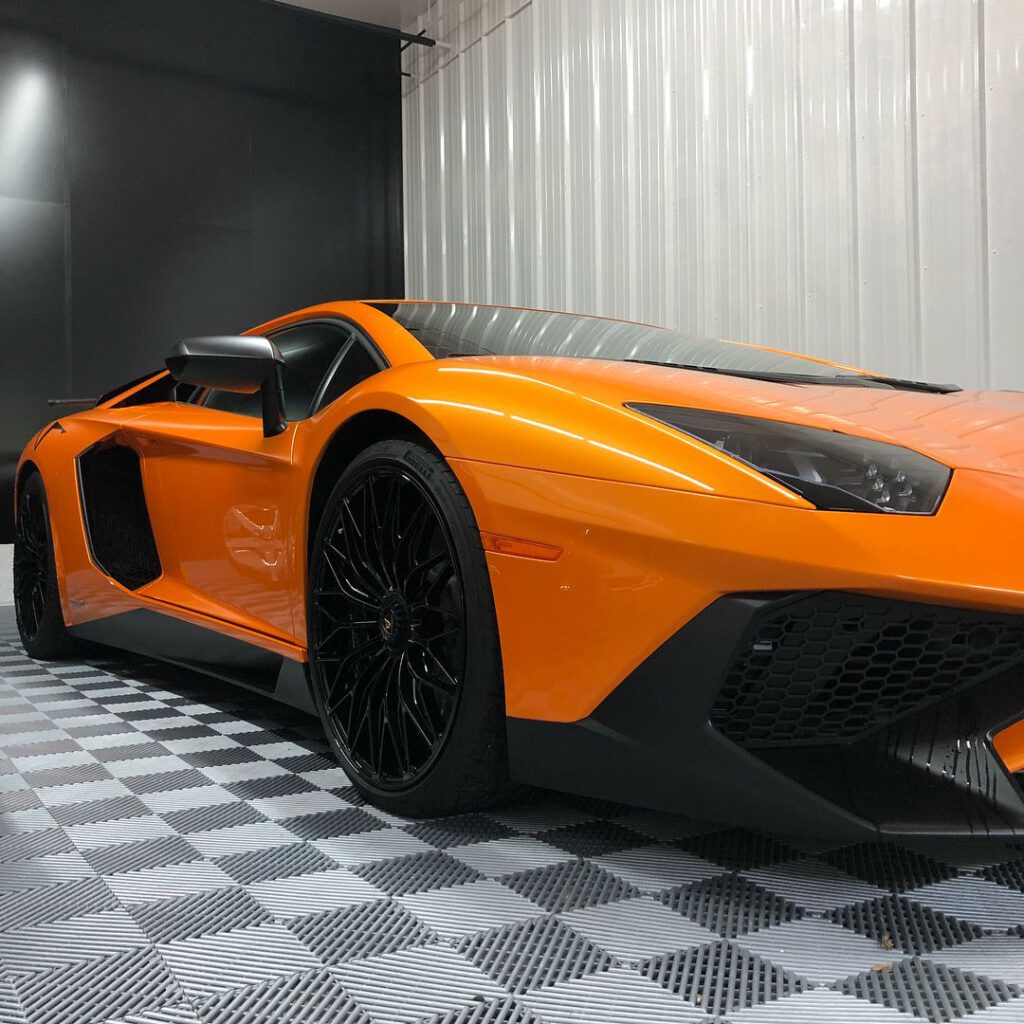When considering paint protection film for your vehicle, understanding the cost involved is essential. From material quality to installation expertise, various factors impact the overall investment. Professional installation offers precision and potential warranty coverage, but is it worth the cost? As you explore the intricacies ofinvesting in paint protection film, you’ll uncover vital insights that can guide your decision-making process.

Key Takeaways
- Material quality impacts cost; choose high-grade for enhanced protection.
- Professional installation ensures a precise fit, impacting overall cost.
- Consider long-term benefits: PPF prevents repair expenses.
- Warranty coverage varies; check limitations and transferable options.
- Compare DIY savings to the benefits of professional expertise and warranty.
Decoding the Cost: What to Expect When Investing in Paint Protection Film
Benefits of Paint Protection Film
Investing in paint protection film offers vehicle owners a reliable shield against scratches, rock chips, and other exterior damage, ensuring long-lasting aesthetic appeal and higher resale value. When considering the long-term durability of your vehicle’s exterior, paint protection film proves to be a wise investment. With this protective layer in place, your car’s paint job is safeguarded from the wear and tear of daily use, maintaining its pristine condition for years to come.
Moreover, paint protection film not only ensures long-term durability but also enhances the aesthetics of your vehicle. The film is designed to be nearly invisible, preserving the original color and finish of your car while providing an extra layer of shine. This enhancement in aesthetics not only boosts your vehicle’s overall appeal but also contributes to a sense of pride in ownership.

Types of Paint Protection Film
When considering paint protection film, it’s essential to understand the different material options available and how they can impact the overall protection provided to your vehicle’s surface.
Additionally, knowing the details of the installation process will give you insight into the level of expertise required and the durability of the film.
Film Material Options
Choosing the right type of paint protection film is necessary to ensure the best protection and longevity for your vehicle’s exterior. When contemplating film material options, factors such as material durability, cost-effectiveness, film thickness, and appearance play vital roles.
Material durability is a key aspect when selecting a paint protection film. Opting for high-quality materials will ensure that your vehicle’s exterior remains shielded from marks, chips, and other damages over an extended period.
Additionally, evaluating the cost-effectiveness of the film is important in making a wise investment. While higher-quality films may come with a higher upfront cost, they often provide better long-term protection, potentially saving you money on repairs in the future.
Furthermore, film thickness can impact the level of protection offered by the paint protection film. Thicker films are generally more resilient against impacts and scratches, providing enhanced safeguarding for your vehicle.
Lastly, considering the appearance of the film is crucial to maintaining the aesthetic appeal of your vehicle while ensuring it stays protected.
Installation Process Details
To ensure a successful installation process, understanding the different types of paint protection film available is indispensable. When it comes to the installation steps and timeframes, it’s essential to note that the process can vary depending on the type of film chosen.
For example, pre-cut kits may have a swifter application time compared to custom-cut films that require more intricate fitting.
Prep work plays a significant role in the installation process. Properly cleaning and preparing the vehicle’s surface before applying the film ensures a smooth and durable finish.
Application techniques also differ between films. Some films may require heat for ideal adhesion, while others may be more forgiving in their application process.
Factors Affecting Cost
When considering the cost of paint protection film, the quality of the material used plays a significant role in determining the overall price.
Additionally, the size and type of vehicle you have will also impact the final cost, as larger vehicles require more material and labor.
Material Quality Impact
Choosing high-grade paint protection film impacts the overall expense due to the advanced materials used in its production. Material durability is a vital factor in the pricing of paint protection film. Top-notch films are engineered to withstand various environmental elements like UV rays, road debris, and pollutants, providing long-lasting protection for your vehicle’s paint. These materials are designed to be more resilient and offer enhanced protection compared to lower-quality options.
Furthermore, installation techniques play an essential role in the cost of paint protection film. Premium films often require specialized installation methods that ensure a precise fit and smooth finish. Skilled installers with expertise in handling top-quality materials may charge a premium for their services, contributing to the overall cost of the installation process.
When considering the impact of material quality on paint protection film costs, it’s crucial to prioritize durability and proper installation techniques to maximize the protection offered to your vehicle’s paint surface. Investing in high-quality materials and expert installation can lead to long-term benefits and savings by safeguarding your vehicle against potential damage.
Vehicle Size Consideration
Considering the size of your vehicle significantly influences the overall cost of paint protection film application. Pricing variations depend on the amount of material needed to cover different vehicle sizes. Larger vehicles like trucks or SUVs typically require more film, leading to higher costs compared to smaller cars. When choosing coverage options, the size of your vehicle plays an essential role in determining the total price.
Installation time is also impacted by vehicle size. Larger vehicles may take longer to install paint protection film due to their extensive surface area, potentially leading to increased labor costs. Additionally, material durability is important to take into account when factoring in the cost. Larger vehicles that are subjected to more wear and tear may benefit from higher-quality, more durable films, which could impact the overall price.
Therefore, before investing in paint protection film, consider your vehicle size, as it directly impacts pricing variations, coverage options, installation time, and material durability.
Professional Installation Importance
The proficiency of professional installation greatly impacts the cost of paint protection film application. When considering the installation expertise needed for applying paint protection film, it becomes clear that choosing professional skills can lead to significant cost savings in the long term.
While it may seem tempting to cut costs by attempting a DIY installation, the complex nature of applying paint protection film requires a high level of precision and experience that professionals bring to the table.
Professional installers possess the necessary training and expertise to ensure that the film is applied smoothly, without any imperfections that could compromise the protection it offers. By investing in professional installation, you not only save on potential reapplication costs due to errors but also secure long-lasting protection for your vehicle’s paint.
The skillful application of paint protection film by professionals not only enhances the durability of the film but also ensures that your vehicle’s paint remains in excellent condition for an extended period, making it a worthwhile investment for maintaining your vehicle’s appearance and value.
Installation Process Explained
Commence the installation process of paint protection film by thoroughly cleaning the surface of the vehicle to ensure ideal adhesion. This step is essential as any dirt or debris left on the surface can hinder the film from adhering properly, impacting its longevity and protective capabilities.
Once the surface is clean, the next step involves carefully measuring and cutting the film to fit the specific contours of your vehicle. Precision during this stage is vital to ensuring that the film covers vulnerable areas effectively, maximizing its durability and protective qualities.
After cutting the film, the installation expert will apply it using a squeegee to remove any air bubbles that may have formed during the process. These air bubbles not only affect the aesthetics of the film but can also impact its ability to protect your vehicle’s paint over time.
The final step in the installation process is to heat the film, which helps it conform smoothly to the curves of the vehicle, creating a polished and clear protective layer.

Maintenance and Care Tips
To maintain the longevity and effectiveness of your paint protection film, implementing a regular cleaning schedule is important. Proper cleaning techniques help preserve the film’s appearance and protective properties. When cleaning the film, opt for a mild automotive detergent and a microfiber cloth to avoid scratching. Avoid harsh chemicals or abrasive materials that could damage the film. Product recommendations from reputable brands specialized in car care can further enhance the cleaning process and extend the life of your paint protection film.
Seasonal care plays an important role in maintaining your paint protection film. Weather impacts, such as UV exposure in the summer or road salt in the winter, can affect the film’s performance. During hot weather, consider parking in the shade or using a car cover to shield the film from excessive heat. In colder climates, regular washing to remove salt and grime build-up is essential to prevent damage. Applying a ceramic coating or wax on top of the film can provide an extra layer of protection against varying weather conditions.
PPF Cost Vs. Repair Costs
Considering the initial investment in paint protection film (PPF) against potential repair costs provides an important perspective on long-term vehicle maintenance. When conducting a PPF cost analysis, it’s vital to weigh the upfront expense of installing the film against the potential repair savings it can offer.
PPF serves as a barrier against various forms of damage, such as scratches, chips, and UV exposure, which ultimately helps in reducing repair expenses over time.
In a cost-benefit comparison, the cost of PPF installation may seem significant initially. However, when compared to the repair expenses that could accumulate without the protective film, the investment in PPF often proves to be more cost-effective in the long run.
Repair costs for repainting, fixing dents, or replacing damaged parts can add up quickly, making the one-time PPF installation cost a worthwhile preventive measure.
Warranty Coverage Details
When assessing investing in paint protection film (PPF), understanding the warranty coverage details is fundamental for evaluating the long-term benefits and potential cost savings.
The warranty claim process is a significant aspect to ponder when selecting a PPF product. Make sure that the manufacturer offers a simple and efficient process for submitting warranty claims in case of any issues with the film. Knowing the coverage limitations is crucial as well. Some warranties may have exclusions for certain types of damage or may only cover specific parts of the vehicle, so be sure to review these limitations carefully before making a decision.
Additionally, check if the warranty is transferable. A transferable warranty can add value to your vehicle if you decide to sell it before the warranty expires. This feature can be appealing to potential buyers and may increase the resale value of your car.
Furthermore, inquire about any extended warranty options that the manufacturer may offer. Extending the warranty coverage can provide you with added protection and peace of mind beyond the standard warranty period.
Professional Vs. DIY Installation
Lorem ipsum dolor sit amet, consectetur adipiscing elit. Ut elit tellus, luctus nec ullamcorper mattis, pulvinar dapibus leo.
Professional Installation:
Pros:
- Expertise: Professional installers are trained and experienced, ensuring a high-quality application.
- Warranty: Many professional installations come with warranties, providing peace of mind.
- Precision: Professionals have access to specialized tools and techniques for precise fitting.
Cons:
- Cost: Professional installation can be more expensive upfront.
- Availability: Scheduling an appointment and finding a reputable installer may take time.
- Dependency: You rely on the installer’s schedule and availability for the installation.
DIY Installation:
Pros:
- Cost Savings: DIY kits are typically more budget-friendly.
- Convenience: You can install the film at your own pace and schedule.
- Learning Experience: Installing PPF yourself can be a rewarding learning opportunity.
Cons:
- Skill Requirement: DIY installation requires patience, skill, and attention to detail.
- Risk of Errors: Mistakes during DIY installation can lead to imperfections in the film.
- Time-Consuming: DIY installation may take longer than professional installation, especially for beginners.
Cost Comparison:
While DIY installation may seem more cost-effective initially, consider the value of professional expertise and warranty coverage for long-term durability and peace of mind. Make your decision based on your budget, time availability, and desired outcome for your paint protection film installation.
Customer Reviews and Testimonials
Customer reviews and testimonials play an important role in informing your decision-making process regarding the effectiveness and satisfaction of paint protection film installations. These insights provide valuable information on customer satisfaction levels and the durability of the product.
When analyzing customer feedback, it becomes clear that satisfaction levels are closely tied to the long-term benefits of paint protection film.
User experience is a key aspect highlighted in many testimonials. Customers often emphasize how the film has protected their vehicle’s paint from various environmental elements, such as road debris, UV rays, and harsh weather conditions. This positive user experience contributes significantly to overall customer satisfaction and reinforces the decision to invest in paint protection film.
Furthermore, testimonials frequently mention the long-term benefits of the product. Customers report that the film maintains its quality over time, preserving the vehicle’s appearance and reducing the need for frequent touch-ups or repaints. This aspect of product durability is crucial in ensuring that customers feel they’ve made a worthwhile investment.
Investing in paint protection film may seem like a costly endeavor, but the long-term benefits far outweigh the initial expense. The irony lies in the fact that by spending more upfront for professional installation, you save more in potential repair costs down the road.
So, next time you consider cutting corners with a DIY kit, remember that true savings and peace of mind come from investing in quality protection for your vehicle’s paint.

